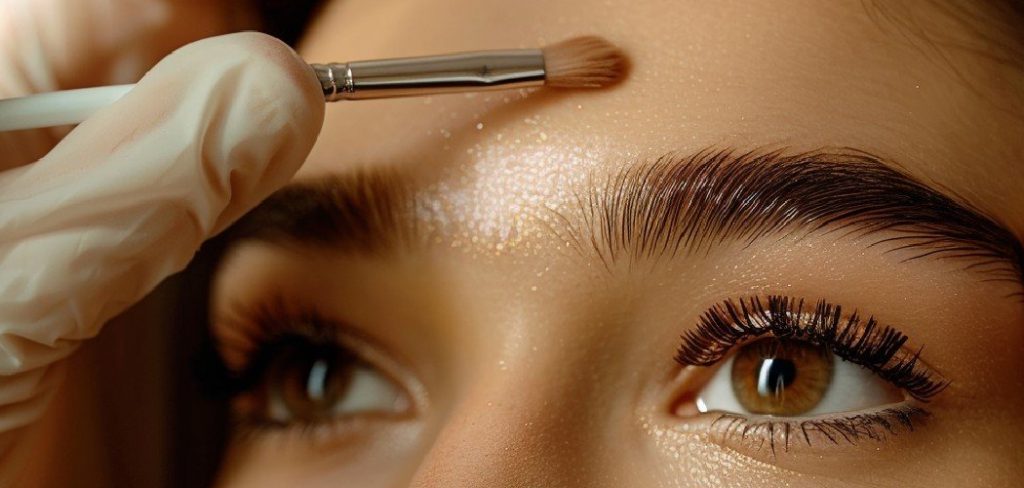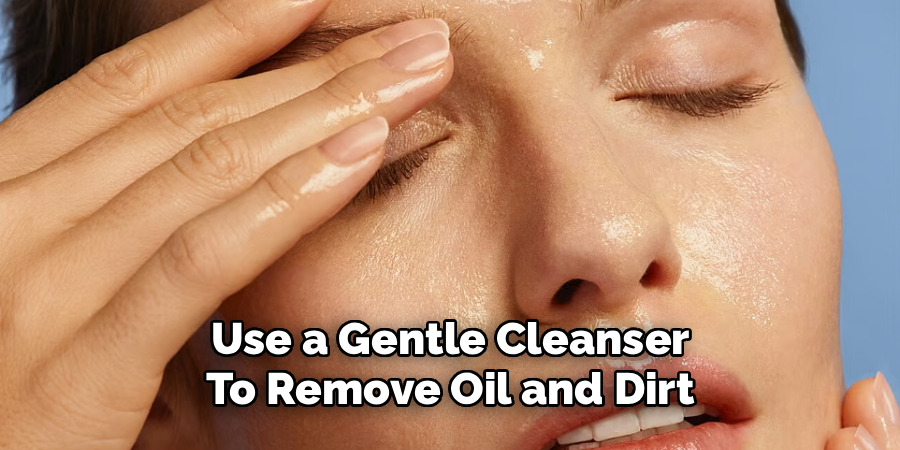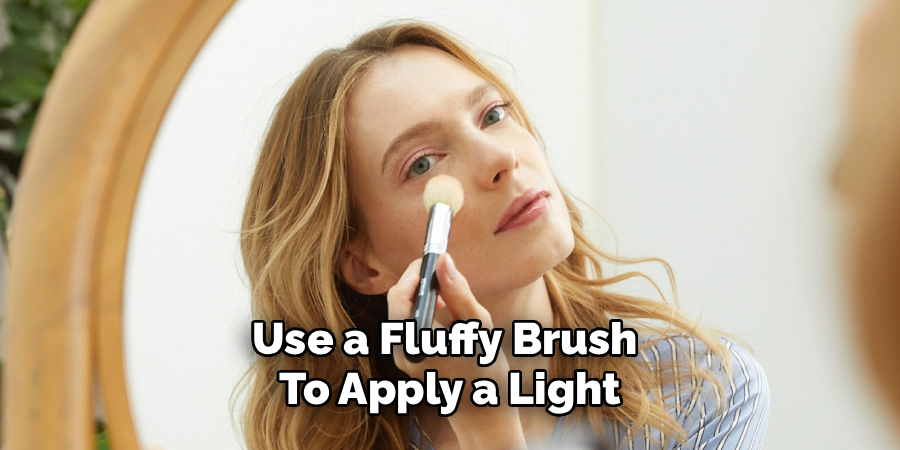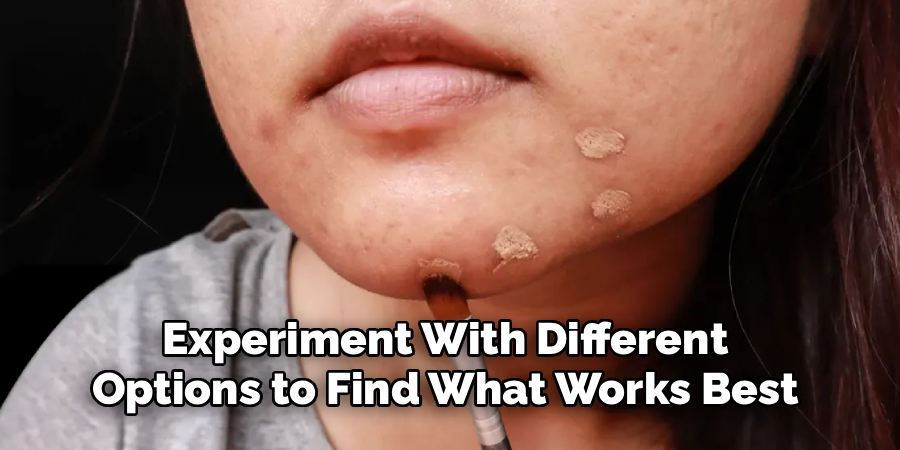Makeup transfer can be a frustrating problem, especially when you want your look to last all day without smudging or staining your clothes. From hugging a friend to pulling a turtleneck over your head, there are countless moments when makeup can end up anywhere but your face. Fortunately, with the right techniques and products, you can keep your makeup where it belongs.

This guide on how to stop makeup transfer breaks down everything you need to know about preventing makeup transfer. With practical advice, essential tools, and expert tips, you’ll feel confident your makeup will stay put—from morning to night.
Why Does Makeup Transfer?
Before we delve into how to prevent makeup transfer, it’s important to understand why it happens in the first place. The main culprit is oil. Our skin naturally produces oils and when combined with external factors like heat or humidity, these oils can cause makeup to shift or rub off onto other surfaces.
Another factor that contributes to makeup transfer is friction. Whether it’s from our hands touching our face or clothing rubbing against our skin, friction can disturb the delicate balance of makeup on the face and lead to transfer.
Tools and Materials You’ll Need
Cleanser and Moisturizer:
In order to prevent makeup transfer, it’s important to start with a clean and moisturized face. Using a gentle cleanser and a lightweight moisturizer will help create a smooth base for makeup application.
Primer:
Primer is a crucial step in preventing makeup transfer. It creates a barrier between the skin and makeup, helping to keep the product in place throughout the day.
Setting Spray or Powder:
Setting sprays or powders are great for locking in your makeup and preventing it from transferring onto other surfaces. These products can also help control oil production on the face, further reducing the chances of transfer.

Long-Wearing Foundation:
Choosing a long-wearing foundation can also play a role in preventing makeup transfer. Look for words like “long-lasting” or “transfer-proof” on the product label. These types of foundations are designed to stay put and resist smudging or transferring onto other surfaces.
Blotting Papers:
If you have oily skin, using blotting papers throughout the day can help absorb excess oil and reduce the chances of makeup transfer. Simply press a sheet onto any areas of your face that tend to get shiny, such as the T-zone, to instantly mattify your complexion.
Touch-Ups:
Carrying a few key touch-up products with you can also help prevent makeup transfer. Pack a small pressed powder compact, blotting papers, and a lipstick or lip gloss for quick touch-ups throughout the day. These products can help control oil, refresh your makeup, and keep it looking fresh without having to completely reapply everything.
9 Step-By-Step Guidelines on How to Stop Makeup Transfer
Step 1: Begin With Clean, Moisturized Skin
Starting with a fresh face is essential for long-lasting makeup. Use a gentle cleanser to remove oil and dirt, followed by a moisturizer suited for your skin type.
Moisturizing helps balance your skin and creates a smooth canvas for makeup. Let the moisturizer absorb fully before moving to the next step to ensure your makeup sticks better and lasts longer.

Step 2: Apply a Primer
Choose a primer designed for longevity, such as one with mattifying or gripping properties. Primer acts as a barrier and helps makeup adhere more effectively to the skin.
Apply a thin, even layer all over your face, focusing on areas where makeup tends to wear off. Allow the primer to set for a minute or two to maximize its effectiveness in preventing transfer.
Step 3: Opt for Long-Wear, Transfer-Resistant Foundation
Select a foundation that’s labeled as long-wear or transfer-proof. These formulas are specifically made to stick to your skin for hours.
Apply the foundation in thin layers using a brush or damp sponge, building coverage slowly. Thicker layers are more prone to slipping, so keep it light to enhance staying power and reduce transfer.
Step 4: Use Concealer Sparingly and Strategically
Apply concealer only where needed—such as under the eyes or on blemishes—and opt for a long-wearing formula. Less product means fewer chances of movement.
Blend carefully with a brush or sponge for a seamless finish. Be sure to let it set before applying powder to lock everything in place.
Step 5: Set With a Loose or Pressed Powder
Setting powder is critical for locking your base in place. Use a fluffy brush to apply a light, even layer across your entire face, focusing on oily areas like your T-zone.
Wait a few moments to allow the powder to absorb any excess oils. This step helps create a matte surface that discourages transfer and keeps your look fresh.

Step 6: Blot Away Excess Oil
Throughout the day, use oil-absorbing blotting sheets to keep shine at bay. Gently press (don’t rub) the sheet onto your skin, especially where makeup tends to slide.
Blotting absorbs oil without disturbing your makeup, thus maintaining your flawless finish while reducing the risk of transfer.
Step 7: Lock In With a Setting Spray
Finish your makeup with a long-lasting setting spray. Hold the bottle about eight inches from your face and mist evenly to seal in your look.
Allow the spray to dry naturally, resisting the urge to touch your face during this time. Setting spray forms a protective layer, making your makeup more resistant to movement.
Step 8: Use Tissues For Extra Insurance
If you have an important event, gently press a single layer of tissue against your face after applying all products. This helps remove any excess product or moisture.
This quick trick absorbs what might otherwise transfer to your clothing, without disturbing your makeup. It’s especially helpful before putting on a face mask or changing outfits.
Step 9: Touch Up and Seal As Needed
If you notice your makeup fading or feeling oily, touch up with powder or setting spray. For extra staying power, consider a makeup sealant for special occasions.
A few strategic touch-ups throughout the day can dramatically reduce transfer. Stay mindful to avoid touching your face and always wash your hands before any touch-ups.
Following these steps on how to stop makeup transfer will help you keep your makeup in place all day long. Remember to choose the right products for your skin type and climate, as well as properly prep and set your makeup. With these tips, you can say goodbye to makeup transfer woes and hello to a flawless look that stays put!
Additional Tips
- Choose clothing that is less likely to rub against your face, such as wide-neck shirts or button-ups.
- Avoid touching or resting your face in your hands, which increases the chance of transfer.
- Use makeup products designed for your skin type to help everything adhere better.
- Consider waterproof or sweat-resistant formulas for extra protection against transfer, especially in hot climates.
- Reapply setting spray after activities like eating or blowing your nose to refresh your protective layer.
- Carry a mini touch-up kit with blotting papers, pressed powder, and setting spray for quick fixes on the go.
- Avoid touching your face too much throughout the day, as this can also cause makeup transfer.
- If possible, try to find a makeup look that requires minimal touch-ups throughout the day to reduce the risk of transfer.
Frequently Asked Questions
Q1: Why Does My Makeup Transfer So Easily?
A1: Makeup can transfer easily due to several factors, including oily skin, thick product layers, or skipping important steps like priming and setting. Environmental factors such as humidity and friction from clothing or masks also play a role. By following a proper routine and using long-lasting products, you can greatly minimize unwanted transfer.
Q2: Can I Prevent Makeup Transfer While Wearing a Mask?
A2: Yes, you can reduce makeup transfer with a mask by using transfer-proof products, setting your makeup with powder and setting spray, and using a tissue to blot your face before putting your mask on. It’s also helpful to choose masks designed with breathable, non-abrasive materials and to change them if they become damp. Regular touch-ups throughout the day can also help keep your makeup in place.
Q3: What Should I Do If My Makeup Starts Transferring Midday?
A3: If you notice transfer during the day, start by gently blotting the area with oil-absorbing sheets. Avoid reapplying thick layers of foundation, as this can worsen the issue. Instead, touch up lightly with powder and finish with setting spray for a refreshed look. Always make sure your hands are clean before touching your face to prevent smudging and transferring.
Q4: Are There Specific Products That Help Prevent Makeup Transfer?
A4: Many brands offer long-wear and transfer-resistant formulas for foundation, concealer, and setting sprays. Products labeled ‘matte,’ ‘waterproof,’ or ‘transfer-proof’ are great choices. Experiment with different options to find what works best for your skin type and lifestyle. Reading reviews and asking for samples at beauty stores can also help you find your ideal products.

Conclusion
Dealing with makeup transfer is a common struggle, but with the right steps, it’s possible to keep your look fresh and intact all day. Consistency in your routine and selecting the proper products are key factors in achieving transfer-proof makeup.
Don’t get discouraged by occasional mishaps—practice will help you perfect your technique. With these tips and guidelines on how to stop makeup transfer, you can confidently enjoy your makeup without worry, knowing it’s there to stay where you want it most.
About the Author
Jane Hubbard is a passionate beauty expert with a wealth of experience in makeup, hair, and overall beauty techniques. After years of working as a hairdresser specialist, she followed her entrepreneurial spirit and started her own consultancy business.
Jane has always been driven by her desire to help others feel confident in their own skin, and she does this by sharing her knowledge, experiences, and practical beauty tips. Through her consultancy, she empowers individuals to embrace their unique beauty, offering tailored guidance that boosts both self-esteem and personal style.
Professional Focus
- Specializes in makeup, hairstyling, and beauty consulting.
- Provides personalized beauty advice, tips, and techniques to help individuals feel confident in their appearance.
- Dedicated to staying up-to-date with the latest industry trends and developments.
- Passionate about creating a comfortable and empowering experience for every client.
Education History
- University of Craft and Design – Bachelor of Fine Arts (BFA) in Woodworking and Furniture Design
- Woodworking Apprenticeships – Extensive hands-on training with skilled craftsmen to refine carpentry and furniture making techniques
- Online Courses & Masterclasses – Continued education in advanced woodworking techniques, design principles, and specialized tools
Expertise:
- Makeup artistry, hairstyling, and beauty consulting.
- Personalized beauty techniques to enhance confidence and self-expression.
- Educating clients on how to maintain their beauty routines at home.
